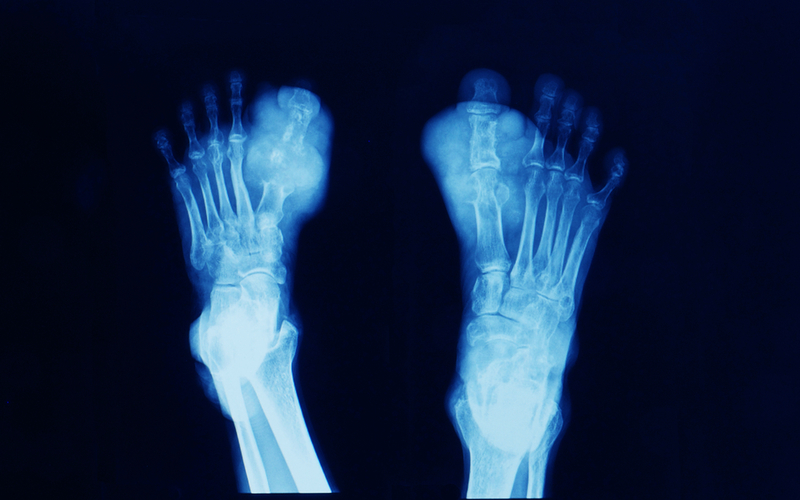Gout patients suffer in silence with low expectations of treatment
Annual European Congress of Rheumatology (EULAR 2019) Press Release Jun 19, 2019
The results of a 14 country pan-European survey presented on 12th June at the Annual European Congress of Rheumatology (EULAR 2019) suggest gout is being diagnosed late, is not well controlled, and is not regularly monitored.

Gout is a very common condition. It is caused by deposits of crystals of a substance called uric acid (also known as urate) in the joints, which leads to inflammation. Periods of time when gout symptoms appear are called flares. Flares can be unpredictable and debilitating, developing over a few hours and causing severe pain in the joints.
The survey included 1,100 patients with gout and found a quarter were not diagnosed until they had four or more flares. Furthermore, over 70% had flares in the last year (a third of these had more than three). Less than half are monitored for serum uric acid two or more times a year and 59% do not have regular follow up appointments. Despite this, eight out of 10 patients claim they are satisfied with their current treatment and do not expect better management of their disease.
“Our results demonstrate that, across Europe, gout has a significant impact on the lives of patients and their families. Although it is easily treatable, there are significant gaps in the current management of gout,” said Marc de Meulemeester, general practitioner with a special interest in gout, Belgium. “This should be a call to action to educate patients and their doctors about adequate management of gout.”
Results suggest that mainly general practitioners versus rheumatologists are involved in the diagnosis of the disease (73% vs. 8%), discussion of gout (68% vs. 15%), and treatment of the last gout flare (59% vs. 11%). Over three quarters of the patients suffered from comorbidities such as high blood pressure (52%), high cholesterol (41%), and type II diabetes (23%). Regarding treatment, 58% receive uric acid lowering therapies, 43% painkillers, 25% colchicine, 13% non-medical pain relief and 12% corticosteroids.
“Gout is a disabling condition with increasing incidence across Europe,” said Professor John D. Isaacs, Chairperson of the Abstract Selection Committee, EULAR. “It is very disappointing to see that, despite effective treatments, gout is being sub-optimally managed, and patients are suffering as a result. The findings of this survey support the high unmet need of gout patients as described in the EULAR RheumaMap. Strategies need to be developed to improve the care of people with gout.”
The project was initiated in 2018 and is supported by 12 international and national patient organisations in Europe. The 15-minute online survey was developed with patient and clinical experts and was conducted in 2018. There were 1,100 responses from patients with gout (mean 2.9 flares in past 12 months) from Austria, Belgium, France, Denmark, Germany, Italy, Ireland, Malta, Netherlands, Norway, Portugal, Spain, Sweden, and Switzerland.
This article is a news release from Annual European Congress of Rheumatology (EULAR 2019) Meeting. Read the original here.
-
Exclusive Write-ups & Webinars by KOLs
-
Daily Quiz by specialty
-
Paid Market Research Surveys
-
Case discussions, News & Journals' summaries